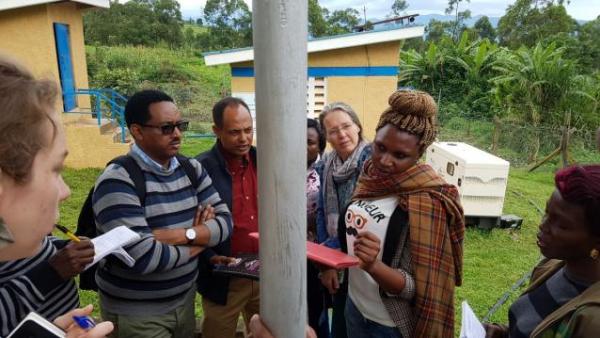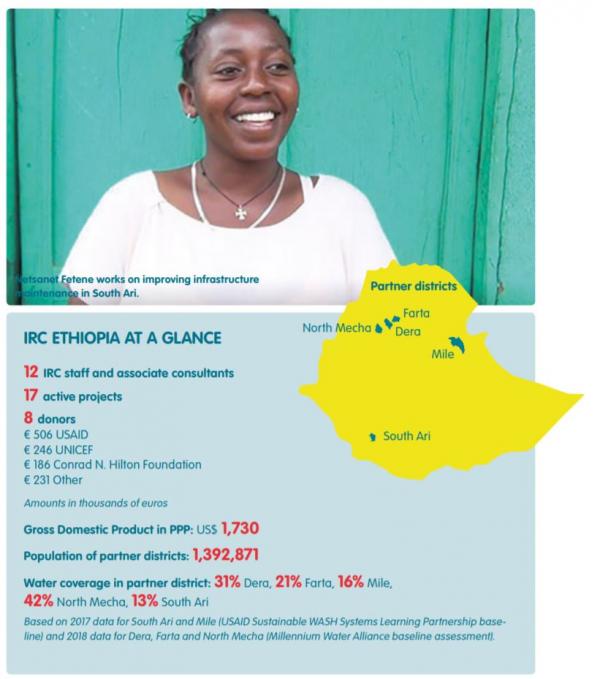We take you on a journey through highlights of our focus countries, collected for the IRC Annual Report 2018.
Published on: 19/07/2019

"My main responsibility is training and supervising Water Users Associations to manage water points properly and to make sure that maintenance issues are solved on time." - Netsanet Fetene, expert for community participation in water supply scheme management, Water, Mine & Energy Office, South Ari Woreda
This year we created new, and built stronger partnerships in five woredas (districts).
In Mile and South Ari we established learning alliances at zone and district levels, conducted action research, and worked on monitoring and rural water supply maintenance.
We also supported two ambitious initiatives to strengthen systems in other areas of the country:

We aim to learn from each other and track and assess our impact in districts. One highlight was a joint event of our Ethiopia and Uganda teams under the USAID Sustainable WASH Systems Learning Partnership. We came together in Fort Portal, Kabarole, the partner district of IRC Uganda, to reflect on our work in districts and the successes and challenges of working with learning alliances. See photo above.

1 Purchasing power parity (PPP) is a popular metric used by macroeconomic analysts to compare economic productivity and standards of living between countries.
2 Water coverage percentages refer to services that are at least basic = improved source within 30 minutes round trip collection time.
3 Sanitation coverage percentages refer to services that are at least basic = use of improved facilities which are not shared with other households. These definitions applies to all country infographics.